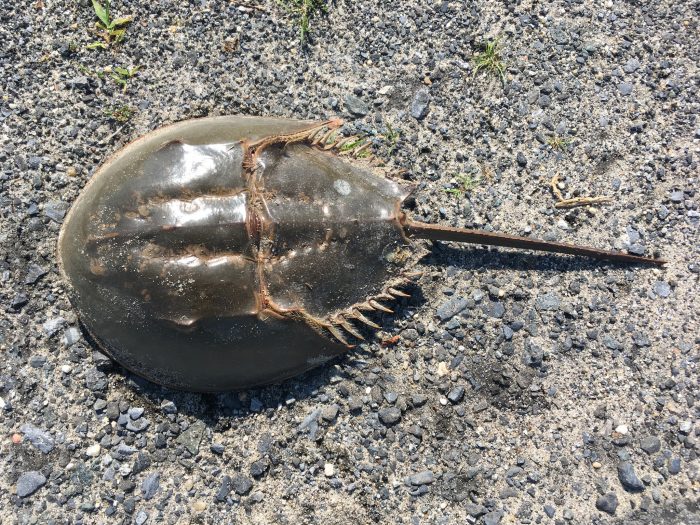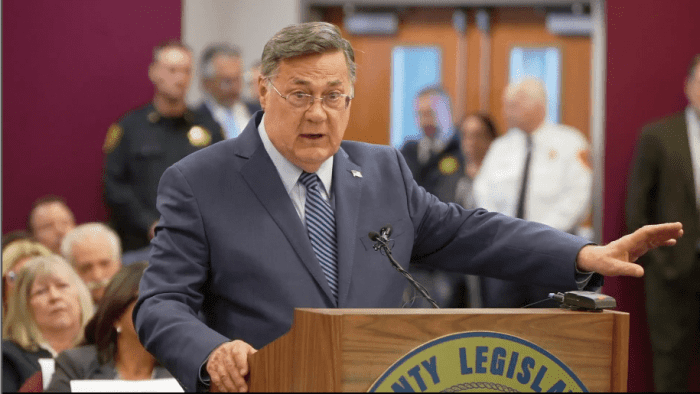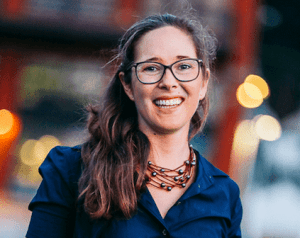By Emily Mandracchia
Nearly one year after Harbor Road in Stony Brook collapsed, the unrepaired road is raising serious public safety concerns for residents and first responders. The delay has led to increased emergency response times and growing fears that the situation could result in avoidable loss of life or property.
At a June 17 Fire, Rescue and Emergency Medical Services & Preparedness Committee (FRES) meeting in Hauppauge, residents and officials voiced frustration over the inaction and jurisdictional confusion surrounding the collapsed roadway. They warned that the current detours and narrow, curving side roads are not appropriate for emergency access and are already contributing to slower response times for fire and EMS services.
Beth Zweig, a resident of Head of the Harbor, said the risk is not theoretical. “This is not speculation. Five and seven minutes could be the difference between a person found DOA or a house burned down,” she told attendees, describing the main thoroughfare as “nearly impassible.”
In response to public pressure following a community rally earlier this year, the Ward Melville Heritage Organization (WMHO) promised to provide a list of provisions that would render them comfortable signing the FEMA application. Instead, according to a June 10 letter from WMHO’s attorney, the organization presented a list of stipulations that the town and federal government would need to meet in order to access the site for repairs — without accepting ownership or signing off on the application.
The lack of a signed agreement is preventing FEMA funding, which is tied to a 30-month deadline for project completion. Nearly 10 months have already passed. If the parties fail to act soon, the funding could be rescinded. Suffolk County Legislator Robert Trotta estimates repairs could cost $8 to $10 million.
Dominick Thorne, a Suffolk County legislator and member of the Public Safety Committee, warned at the June 17 meeting that continued delays not only jeopardize FEMA funding, but could expose all involved parties to greater legal risk if emergency response is compromised.
“There will be more lawsuits if someone calls the fire department and they don’t make it,” Thorne said.
The Village of Head of the Harbor officials have expressed concern that the current situation has created unsafe conditions for residents and placed emergency responders in a difficult position.
Public safety officials have not confirmed whether any formal emergency response assessments or contingency plans have been issued regarding Harbor Road, and no agency has stepped forward to assume full responsibility for leading the recovery.
Community members have called on Suffolk County Executive Ed Romaine to take a leadership role in coordinating a resolution, citing his prior involvement with infrastructure issues and relationships with local stakeholders. As of this writing, no direct action has been announced by the county executive’s office.
For residents and first responders alike, the concern is that the longer the road remains closed, the higher the chance of a preventable tragedy.








